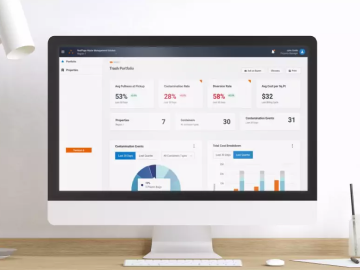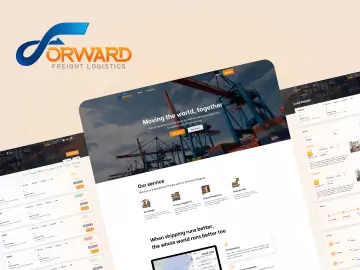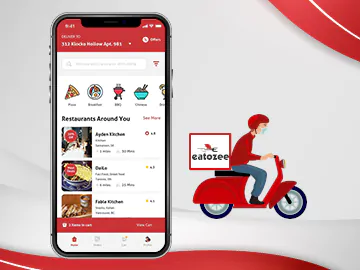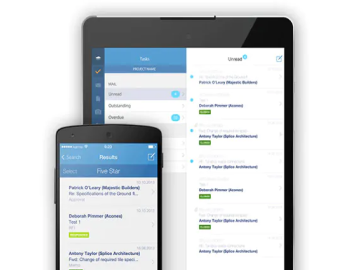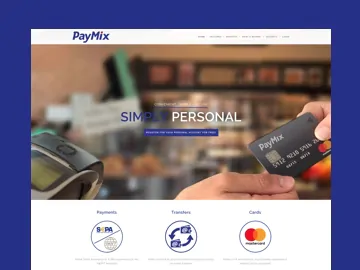It's simple: without data, you don't have a marketing strategy
Overview
Success is a number’s game.
It’s critical to understand how your business is performing and how your audience is responding based on data because you’ll acquire the ammunition to grow, scale, and make better strategic marketing decisions.
My IT Ageency’s data-hungry analysts are passionate about tracking your business’ performance and gleaning unique, data-driven insights to elevate your marketing strategy.

Our Approach
ASSESS & UNCOVER OPPORTUNITIES
- Evaluate current analytics system to grasp the full picture of your site’s performance
- Implement accurate goal and conversion tracking for optimal insights


SET THE FOUNDATION
- Aggregate historical data to understand patterns of behavior or seasonality
- Establish SMART benchmarks that link your business goals to our marketing metrics
- Acquire and organize your most critical KPIs to measure success in a meaningful way
TRACK, ANALYZE & REPORT
- Monitor daily, weekly or monthly performance with extensive KPI tracking methods
- Develop custom analytics dashboards unique to your business and goals
- Aggregate and automate all data sources for holistic comparison across your entire marketing funnel
- Provide full transparency and present actionable next steps on monthly reporting calls

If marketing strategy is a ship, analytics is the rudder we use to steer. We proactively collect and organize marketing data to guide our strategic decisions. When done correctly and thoughtfully, analytics is more than just a spreadsheet full of numbers, but rather an insightful glimpse into what your customer is telling you through their behaviors.
Khairul Anam | Sales & Marketing Director

Strategic Fit
With a solid SEO strategy in place, you can build an online audience and increase awareness of your brand. This opens the door for more leads, conversions or revenue through other marketing channels.
We looked for local marketing agencies that had multi-functional areas of expertise and had relevant industry knowledge. Out of approximately 10 different vendors, we selected My IT Agency because they were able to offer the most personalized data to support their ability to help us achieve our goals.
Juliah Ma
Marketing Manager of CM
FAQs
Marketing analytics allows us to measure the effectiveness of your marketing efforts and budgets. With these insights, we can make strategic decisions to improve your marketing plan. Analytics enable us to see what’s working, what needs work and where we can test new opportunities.
Typically, no. Google Analytics, your native website data, and ad platform data are good starting points for us to analyze your marketing data. These tools are free or already included as part of your subscription.
This largely depends on your business goals. For example, if your goal is to aggressively acquire new customers, we would calculate your marketing spend by first determining your Customer Acquisition Cost (CaC), your Average Order Value(AOV), and your Average Customer Lifetime Value (LTV).
If your goals are outside of acquisition, the metrics we use to determine your ad spend would change. Feel free to chat with us about your business goals, so we can help you determine your ideal paid media budget.
Return on ad spend (ROAS) differs depending on campaign goals and target audience. For example, if you are acquiring a new customer, you may want to scale your ROAS down to 1 in order to capture more net new customers.
Why is this okay? If you break even on acquiring a customer, then you are adding them to your database for free. From there, if that customer purchases again, their LTV will grow. This is why businesses should focus on customer LTV rather than initial acquisition costs.
If your campaign is targeting current customers, we’d aim to scale the ROAS as high as possible. You’ve already acquired these customers, so now your goal is to further monetize them and increase their LTV. In that case, the higher the ROAS, the more revenue you generate from your customer base.
This will largely vary by industry, target audience and other factors. As a rule of thumb, you should aim to break even on the cost it requires to gain a new customer within the first year. Once you break even, every purchase that customer makes afterwards will be profitable to your business.
Lifetime Value is calculated by determining the revenue value over the lifetime of a customer. For example, if your average customer spends $900 per year with your business and you retain them as a customer for 5 years, your customer LTV is $4,500. Other factors can affect LTV, like average churn rate, annual spends by cohorts and upsells. If you would like help determining your customer LTV, please reach out below.
Ready to START a Project?
To start, use form below to tell us about you and the project
Trusted by













